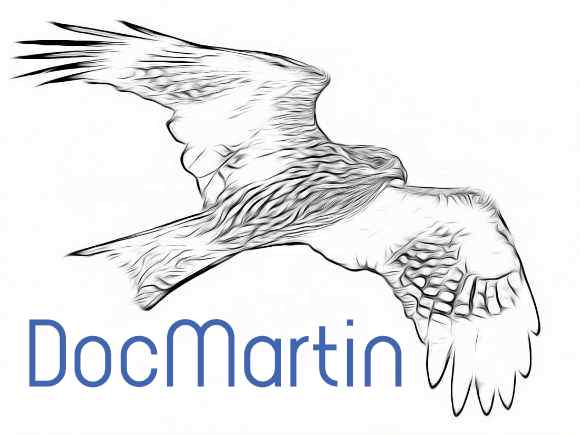- 這個話題是空的。
- 作者文章
- 2 2006 年 5 月 6:32 下午 #3332
在青海省發現一隻死斑頭雁(去年春天,青海省爆發了大規模的斑頭雁,導致數千隻野生鳥類死亡),引發了許多問題。
一種可能性(尚未得到證實)是,這可能與人工飼養的水鳥有關。
然後,國際鳥類聯盟的理查德·托馬斯提出了各種問題:
引用:在第一份報告一年後,青海再次發現 H5N1 確實令人著迷,並引發了許多問題。它回顧了2004年1月拉薩家禽市場的兩次疫情,以及一年多後的2005年8月再次爆發的疫情。 [事實上,根據 ProMed 的報導,糧農組織將第二次疫情追溯到該市的一家商業家禽工廠]。
找出涉及哪種菌株?鑑於蘭州距離
青海,還有蘭州在絲路的關鍵位置,我非常喜歡
如果菌株不是青海菌株,我會感到驚訝,但那就好
確認這一點。2004年疫情爆發後,蘭州做了哪些「清理」工作
回到那裡,為什麼它在 2005 年(再次)失敗了(或者這座城市保留了
生產受感染的家禽/動物飼料 20 個月)?有沒有
家禽和雞糞動物的限制
同時,來自蘭州的飼料/化肥運輸,特別是
沿鐵路線向東歐出口?2006年斑頭雁感染病毒是因為它在
從2005年開始,蘭州重新供應到環境中
環境(例如受感染的雞糞動物
那裡生產的飼料/肥料),或者是因為那裡持續存在的感染
野生鳥類族群? [我們知道死鵝是否真的有
病毒,還是它的抗體?如果是後者,他們可能是倖存者
2005年因其他原因死亡]。這麼多問題……我確信有人至少能回答其中一些問題。
更新,2022 年 7 月 8 日:野鳥從鄱陽攜帶禽流感到青海,這似乎總是胡說八道;來自那些了解病毒但對野生鳥類一無所知的人。我發現了一篇關於鄱陽鴨子遷徙研究的論文(在那裡的冬天過後);摘要包括:
//這些野鴨(不包括留鳥綠頭鴨和中華斑嘴鴨)沿著東亞遷徙路線沿著海岸到達中國北部、蒙古東部和俄羅斯東部的繁殖區。沒有一隻向西遷徙到青海湖(最大的野生鳥類流行病發生地),因此未能證明與中亞遷徙路線有任何遷徙聯繫。新開發的布朗橋空間分析表明,飛道中報告的 HPAI H5N1 疫情與緯度和家禽密度有關,但與核心遷徙走廊或濕地棲息地無關。此外,我們發現爆發時間和野鴨移動之間存在時間不匹配。 //
東亞遷徙路線中水鳥的遷徙及其與 HPAI H5N1 疫情的空間關係6 2006年5月7日下午7:23 #4216令人費解的是——在沒有證據表明斑頭雁的越冬地存在 H5N1 病毒——以及令人不安的報告:
引用:農業部週五證實,中國西北部青海省偏遠地區又發生一起野生鳥類爆發禽流感病例。4月23日,玉樹縣濕地發現17隻斑頭雁死亡。
該部門在網站上表示,截至週四,死亡野生鳥類數量已上升至125只,其中123只斑頭雁。
國家禽流感實驗室週三證實,死禽檢測結果呈現 H5N1 株陽性,這是一種高度傳染性的病毒株,已導致該國 12 人死亡。
疫情發生地屬高寒地區,距離省會西寧、青海湖800多公里,是大量候鳥的重要棲息地。
最近的人類居住區玉樹縣城距離也有60多公里。
該縣人口稀少,附近無家禽飼養。
全省家禽未發生禽流感疫情。
該部表示,該省獸醫部門已對該地區進行了消毒,並正在密切關注任何新病例。
附近的牲畜已被轉移到遠離疫情地點的夏季牧場。
當地政府要求當地牧民與死鳥保持距離,以防止病毒感染人類。
這是上週六剛察縣發現一隻死斑頭雁攜帶致命病毒後一個月內該省發現的第二起病例。
8 2006年5月8日 上午 #4217http://www.xnyts.com/qinhai/tra6-7/tra7yes23.htm
“野生動物——斑頭雁”顏眼,Ap 組。青藏高原海拔
2000-4000公尺的湖岸及河島懸崖
人類的居住地,棕色的天空,以及每個村民的命運之後
明顯的“U”形黑色帶狀條紋,故稱“半頭眼”。 【斑頭雁,成群結隊?到
夏侯鳥每年從南方遷移到三月中旬,越冬
南方的季節又回來了。青海湖釣到此鳥較多
半頭岩吊刀人工孵化管理中心已建成
成功的。它們的性子比較溫順,大小圖鵝蛋,
葷菜裡,落著巨大的、不規則的蘆葦和藻類、浮游生物。8 2006 年 5 月 3:13 下午 #4218注意這裡——最後一段——重新污染等。
這裡確實可能存在問題,一旦 H5N1 通過家禽貿易(合法和/或走私)進入該地區,就會帶來麻煩。尤其是家禽養殖似乎在同一個地方。http://academy2003.cpst.net.cn/popul/farms/gradn/artic/50119122108.html
“板頭岩科技休息期”板頭岩雖然飼養簡單,養殖利潤較高,但養殖利潤較低
繁殖率,鋪設時間短,因此如何延長
非產蛋季節允許的時期如何降低成本
獲得關鍵的高額利潤。接下來板頭岩將關閉圍產養殖
方法介紹給讀者。1. 給水抗旱 雖然地表可以
透過飼養板頭岩減少了清潔工作量,但會導致
水體污染,夏季水體變暗秋季放壞
異味,嚴重影響半頭眼的健康。因此,在七月排
擦乾產後水,將池塘清洗消毒,然後
板頭岩適宜的魚、水生菜等
消耗。這時,半頭眼更多的陰涼轉移到
旱地耕種可以雅舍(切到側翼),2000年1月2日
一個月前的大雁和雞,然後是野外
鵝併入水。2. 停止照明,預計一般會遊覽綠半頭岩
從 12 月開始,需要額外的光線來刺激它們
雞,但這應該停止對產後的照明,
產婦或不准阻止其春天。此外,期間
斷斷續續,防止半頭眼肥胖可餵料上
綠色環保,節省飼料成本。應有條件安排
秋季和牧場種植。3.對於每個品種,節省飼料 使用半頭岩允許3-6個月
僅在年度中,其他類型的特徵為月份,
當最後一批蛋產完,大雁又起飛,離開
部分高產量、優質的大雁,當全部
商品應顏賣。去年四月底的時候小燕
孵化損失,選用好的小燕當生長時
落雁後保留9-10個月至2年
春天,當這些半頭燕性成熟並開始產蛋時。
小燕因母雞全部使用野生肉質而損失慘重
鵝和雞一半用作飼料,因此顯著
節省飼料。4.身體健康,打疫苗板頭眼雖多
抗病,病害少,但貓,環境嚴重
污染、免疫力下降、家禽交叉感染
顯著增加發生率,因此應該
關閉了疫苗接種。根據主要疫苗接種亞文介紹,
霍亂二苗、大腸桿菌疫苗等幾種主要疫苗。顏好
保健的同時也要定期採摘消毒。使用面
培養,還要在夏季留出,並除去土壤水分
糞便、水庫進行消毒。9 2006 年 5 月 1:44 下午 #4219報告中也包括斑頭鵝養殖/人工飼養。
再次注意養雞業——這裡大幅增長,因此可能對其他地方的雞有需求。http://www.qh.xinhuanet.com/qztlw/2006-04/25/content_6840932.htm
“拉薩市抓住機會發展鐵路產業”今年拉薩市農牧業經濟
畜牧園區聚焦,把握歷史機會開放
青藏鐵路,將進一步優化產業結構
結構上,大力發展畜牧園區產業。
…
大力發展農村及城郊畜牧業
農業。進一步加速乳牛養殖基地建設
鞏固現有乳牛養殖基地,完成更多
進口優質乳牛2000多頭。完成「雙
百人」養殖基地建設,即:6,672張就業卡、林
週100萬隻有西藏拉薩兩縣的白雞
雞規模養殖基地和億隻雞基地。長的
自己在城關區曲水大字沙生豬養殖基地
建設完成10萬隻羊單位短育肥牛。
發展曲水縣水產養殖及其他水產養殖業
板頭岩6672卡縣興建蛋雞養殖基地[=斑頭雁]
養殖基地、利用當地水庫、濕地開發
漁業和養殖業。拉薩養蜂業的發展
曲水縣示範戶50戶。2006年5月11日 5:28 下午 #4220所選資訊的一些人工翻譯:
1 《拉薩市抓住鐵路產業發展機會》 2006-04-25 為配合西藏鐵路通車帶動畜牧業發展,BHG在擁有濕地和濕地的貢卡縣建立了養殖基地(家禽/雞蛋)水庫也適合水產養殖。
2 「200隻半頭岩回歸自然」 昨天(2005年8月29日)拉魯濕地放生200隻BHG http://tinyurl.com/ogoo2此舉旨在提高人們對自然重要性和自然和諧的認識,並提高拉魯縣的可持續發展水平。這些鳥在拉薩飼養,由公司免費贈送,以紀念拉魯國家保護區的開放。
3「中國首次人工繁殖野生板頭岩成功」 中國首次人工飼養板頭岩,南方山區300隻。當地畜牧局局長王懷廷稱,牧民在羊卓雍措湖(三大聖湖之一)附近撿到了300多個廢棄雞蛋。
成功率為99%,100%達到成熟。他們現在的體重超過2公斤。由於環境惡化,野生鳥類數量銳減,僅存的羊卓雍錯有3萬隻鳥。王說,在它們大規模繁殖後,有些將被放歸野外,今年(2003年)當地政府計劃建造一個300萬元人民幣(20萬英鎊)(這不是3億元人民幣!)的野生BHG繁殖中心,完全基於野生鳥類的棲息地。 (意味著鳥類也將被飼養來獲取肉/蛋)。
2006年5月12日 上午8:27 #4221來自美國研究人員和分析師的資訊:
在泰國,自由放牧的家鴨與 H5N1 分佈之間存在關聯(自由放牧的鴨子較多;然而,透過採取控制措施,H5N1 似乎也在鴨群中滅絕)。
http://www.cdc.gov/Ncidod/EID/vol12no02/05-0640.htm那麼有趣的是,中國正在西北地區(新疆、青海、內蒙古)的草原上使用鴨群來捕食蝗蟲。
鴨子巡邏隊驅趕中國蝗蟲15 2006年5月7日 下午 7:54 #4222國際鳥盟的理查德·托馬斯 (Richard Thomas) 表示:
又一批斑頭雁養殖總結。
很有趣的是,青海的人工繁殖計劃
湖泊部分改變了該物種的遷移習性——這意味著
練習必須已經進行了一段時間;我想知道怎麼樣
準確地改變了他們的習慣。知道什麼是很有趣的
鳥類也可以吃:來自蘭州工廠的動物飼料
也許?8 http://www.chinabreed.com/special/205/2006/02/2006022342677.shtml
“顏與馴化管理”這是對BHG的好處比較詳細的分析
肉/蛋/飼養方法,這裡只是一個概述—肉蛋白
含量20.98%,高於雞肉/牛肉/豬肉,雞蛋可煮
羽毛可以以多種方式用於羽球,羽絨可用於
衣服為藥,肉為藥,可以治療癌症(!!!)。行為
遷徙(沒有說這是否是馴化它們的問題),配對
終生、溫馴、素食、抗病、產蛋 7-25 枚、服用 31 枚
孵化天數,人工飼養時,男/女孵化數量相同,產蛋
10天后,每2/3天一次,第一年產蛋約15只,增加
第 2-6 年最多 25 個。人工培養箱最佳,38-38.5C,給予
細節,還有雞舍(其他文章說可以在外面飼養)、食物。
最好在 60 天以上出售…9 http://www.nj.qhei.gov.cn/gyly/ysdw-02.shtml
“半頭岩”建有人工孵化中心及半地下觀測室
建在青海湖,人工飼養部分改變了它們
遷徙行為。10
http://xzb.sh.gov.cn/node2/node4/node181/node209/node214/userobject1ai22
934.html
“西藏那曲人工馴化野生板頭岩成功”繼在山南(南部山區,即羊卓雍錯)取得成功之後
湖,拉薩以南約100公里)現在從Xainza縣傳來好消息,
那曲地區(拉薩東北約300公里),已飼養BHG 500只
成功滿足了市場需求。他們正在被剝削
合理地保護自然資源,是向前邁出的一大步
畜牧業調整。2006年5月17日 上午9:37 #4223理查德·托馬斯再次說道:
《半頭岩技術休市期》
本文強調了馴化斑頭雁的可能性。 BHG雖然飼養簡單、利潤高,但繁殖速度慢,產蛋期短,因此延長產蛋期、降低非產蛋期成本是提高利潤的關鍵。以下是非產蛋期的一些飼養方法:
1.將它們移至旱地-雖然在水中飼養可以減少清潔工作,但會增加污垢、氣味,嚴重影響它們的健康。因此,應在7月停止產卵時對土地進行排水,對池塘進行清潔和消毒,以便用於魚類養殖和種植蓮花作為BHG的食物。應將它們移入乾燥的棚屋(並剪掉翅膀),將產蛋季節提前一個月至明年一月,並將繁殖鳥類放回水面。
2.12月份晚上以人工光照刺激產蛋,但非產蛋期後應停止人工光照,防止春季不產蛋或減少產蛋。為了防止它們在非產蛋季節體重過重,飼料應以綠色食品為主,這樣可以降低成本。
3. 只在三月到六月之間產蛋,因此除了最好的蛋雞外,所有蛋雞都應該被出售。 4月下旬最後一批雛雞孵化後,最好作為種雞飼養,並飼養9-10個月。從孵化到產蛋,消耗的青飼料僅為蛋雞的一半,節省了飼養成本。
4. 儘管它們(天然)具有抗病性,但它們很快就會造成嚴重污染,從而降低其免於疾病的機會,並且還會感染家禽,導致其發病率急劇上升,因此必須在產蛋季節之外接種疫苗(提供詳細資訊)。也必須保持雞舍清潔並消毒。池塘養禽,夏季要換水,清理糞便,池塘徹底消毒。
2006年5月18日 下午3:50 #4224新聞甚至提到了這個網站;儘管不完全正確——該資訊首先來自一位日本研究人員,發佈在一個有關家禽流感和保護的新聞群組上。我將一些帖子貼到該線程中;國際鳥盟的理查德·托馬斯(該新聞組的創建者)向該組發送了更多消息,我也添加了這些消息。
不過,很高興看到這個故事;看看糧農組織的胡安·盧布羅斯的引言!引用:中國人承認青海湖附近有野生鳥類繁殖。候鳥負責傳播的假設
遠距離傳播的禽流感再次遭受打擊。去年,一個
致命的 H5N1 株在數千隻候鳥身上爆發
中國西部的青海湖似乎提供了第一家公司
這個想法的證據。由於湖泊距離太遠,專家推測
受感染的鳥類是從中國南方飛來的。但現在看來,自 2003 年以來,主要的遷徙動物之一
受影響的物種是人工飼養的斑頭雁
靠近湖。養殖場-實驗的一部分
計劃既馴化鳥類又將它們釋放到
恢復野生族群-增加養殖鳥類的可能性
是疫情爆發的源頭。世界衛生組織(WHO)駐北京發言人羅伊·瓦迪亞(Roy Wadia)
同意,如果得到證實,這一發現是“重要的”,因為改變
繁殖實踐可能有助於控制感染。香港大學病毒學家關毅與人合著
《自然》雜誌去年七月發表的論文指出,遷徙的鳥類導致了
爆發(參閱 Nature 436, 191?192; 2005)。關先生說他聽過
當他提交論文時就有關於該計劃的傳聞,但未能
確認他們。沒有證據表明中國的養殖計劃導致了青海
他說,疫情爆發了,但確實引發了一些問題。 “培育
斑頭雁增加了這些鳥類與其他鳥類混合的機會
被感染的家禽。諷刺的是,這項育種計畫是由中國媒體揭露的
報告政府促進農業發展努力的機構
以及開業前該地區的環境
7月青藏鐵道;鐵路可望推動
旅遊業和經濟成長。英國劍橋國際鳥盟的理查德·托馬斯 (Richard Thomas) 被發現
剪報,並將英文翻譯發佈到部落格上
(https://www.drmartinwilliams.com)。是否養殖候鳥
肯說,無論是否引發了疫情,這都是一個“警示故事”
肖特里奇是中國資深禽流感研究員。他認為
這樣的計畫沒有充分考慮到威脅
H5N1。遷徙鳥類並未將病毒帶往青海的觀點
所有這些都與其他最近的證據相符。 胡安·盧布羅斯,高級
聯合國糧食及農業組織動物衛生官員
(糧農組織)表示,他現在懷疑移民是否會攜帶病毒
長距離。 例如,目前的 Spring 遷移來自
從非洲到歐洲已經接近結束,沒有疫情爆發的跡象。糧農組織
也檢查了非洲2萬隻野生鳥類,沒有發現H5N1。2006年5月23日 下午3:29 #4225來自西藏資訊網站(大概是在西藏拍攝的), http://www.tibetinfor.com.cn/news/2003-12-28/N0320031228112940.htm
25 2006年5月25日 下午 9:48 #4226青海、西藏候鳥因流感死亡
農業部今天表示,青海省、西藏自治區發現的部分野禽死亡檢體檢測結果呈現H5N1禽流感陽性。西藏那曲地區和青海果洛藏族自治州共發現候鳥死亡399隻。這兩個地區與青海省玉樹縣位於同一鳥類遷徙路線上,該縣本月稍早證實,有 100 多隻野生鳥類死於這種致命病毒。日本研究人員對西藏遺址指出:這是人工培育 BHG 的記錄最完整的地區之一(參見 aiwatch #2098)
「西藏那曲地區人工馴化野生板頭岩成功」 繼山南地區板頭岩人工馴化野生成功後,近日,那曲地區顯紮縣又傳來消息。該縣人工繁殖珍稀禽類500隻,板頭岩長得很好,均達到上市要求。截至目前,沈北特縣在合理利用、保護野生鳥類資源、大力發展養殖業、推動畜牧業戰略結構調整方面取得了長足發展,提供了廣闊的空間。
2006年5月25日 下午 9:50 #4227同樣來自日本研究人員:「廢棄雞蛋的利用」提出的方法與拉薩首次人工繁殖的報告一致。
《拉姆薩爾資訊表》 3.濕地名稱:青海鳥島國家級自然保護區(鳥島) 25.現有研究設施:斑頭雁人工孵化及廢棄蛋利用研究;鳥類環誌等,建立鳥類飼養實驗室。
6 2006 年 6 月 1:46 下午 #4228除了與 H5N1 可能存在的聯繫外,還必須了解此類項目對保護的影響,尤其是在佔據大量自然棲息地的情況下。
http://www.tibetwindow.cn/herd/supply/item/2006-01/09/_89616.html
“山南珍稀野生動物養殖區開發案”1、專案背景及資源
山南地區珍稀野生動物資源極為豐富,僅此一種
國家二級保護動物超過70萬種,
包括麝、黑熊、馬鹿、板頭岩、赤瑪雅、
和馬吉、藏馬雞具有易馴化的特質。西藏唯一縣屬自然保護區區域負責人馬魯,
當地人還有人工馴養的野生馬鹿
傳統。雅眼和絕大多數天然水域野生
半頭岩林業局這一領域科學研究人員眾多
兩種珍稀動物的人工繁殖做了許多嘗試,取得了
重大進展。二、主要內容及規模
專案(一)野生馬鹿、麝、黑熊、棕熊養殖基地。
(b) 野生班頭岩、赤瑪雅、禾瑪吉、藏瑪蛋和
養殖基地。三、市場分析(1)所在地區市場:因為四川的習慣,居住在
城市的藏族飲食已基本完全接近
四川、西藏近年來發展迅速
旅遊,當地土特產發達,糧食充足,只要
運輸線路,運輸成本高,購買
特色食品價格居高不下,西藏土特產
該地區食品市場有很大的市場需求。因此,
馴養、養殖板頭岩、馬陸有較好的市場
前景。(2)市場外:藏族野生馴養動物食品
具有潔淨自然的綠色效果。4、投資估算
預計總投資達6億元。5、——效益分析
人工馴養的野生動物除了提供
特色 野味、熊膽、麝香、鹿茸、鞭子、血液製品
等傳統藥材都是珍貴的,具有很高的藥用價值。
經濟價值;野生家禽高蛋白、低脂、肉質鮮美
非常好,人們在完成外部市場後都喜歡
不可小視。6、合作
商業企業或個人控股。7.業務單位:西藏山南地區林業局
- 作者文章
- 抱緊,回歸主題必須先登錄。
